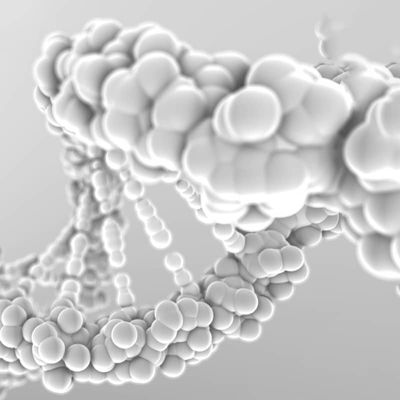

- Home
- Companies
- BillionToOne Inc.
- Products
- Molecular Counting Technology

Molecular Counting Technology
Our molecular counting platform can help quantify nearly undetectable DNA changes, unlocking improvements to non-invasive prenatal screening and liquid biopsy.
Some genetic nuances are nearly undetectable in cell-free DNA
Cell-free DNA (cfDNA) are fragments of genetic material that are shed into the bloodstream. Some conditions are easier to detect and quantify with cfDNA as they involve drastic genetic changes and/or are more abundant in the bloodstream. However, other conditions shed tiny and/or sparse DNA fragments into the blood. These conditions can benefit from quantification at the molecular level to confer meaningful observations.
Traditional non-invasive prenatal screening focuses on assessing a fetus’ risk for larger chromosomal changes (e.g., an extra chromosome such as trisomy 21). But several common and severe conditions are the result of much smaller genetic changes that are not as abundant in the maternal bloodstream. Sickle cell disease, for example, is an inherited condition caused by a base pair alteration within a single gene.
Identifying these tiny changes within cfDNA is complex because the fragments are small and sparse compared to the wildtype variations and vast maternal DNA in the background.
It is important to monitor how a patient’s tumor changes over time. Scans are non-invasive and widely used but can present logistical, cost, and radiation challenges. Liquid biopsy tests are a rapidly growing mechanism to non-invasively look at circulating tumor DNA (ctDNA; a type of cfDNA).
Some small but meaningful tumor changes can be challenging to detect as they may be hard to physically see (on scans) or only reflect minimal changes to the amount of ctDNA in the blood (liquid biopsy). Currently available liquid biopsy products for monitoring focus on qualitative measurements that primarily work when the tumor can be surgically removed (minimal residual disease detection), resulting in an unmet medical need when surgical removal is difficult.
Tiny-scale changes call for tiny-scale quantification
BillionToOne’s proprietary molecular counting technology, or Quantitative Counting TemplatesTM (QCTs), quantifies DNA fragments (molecules) to detect conditions caused by tiny DNA variations that can be sparse in the bloodstream. These include pregnancy-related DNA that code for recessively inherited conditions such as sickle cell disease and cystic fibrosis and ctDNA in the case of cancer.
An accurate count of disease-related DNA fragments (molecules) in a blood sample can tell us about the status of a patient’s cancer or a fetus’ risk for genetic conditions. Because some fragments are tiny and/or sparse, they must be amplified. However, amplification can confound the challenge of detecting disease as it can be noisy and molecules amplify at different rates. Adding QCTs prior to amplification provides a measurement tool that allows for better quantification after this step to determine how many disease molecules were in the initial sample to begin with.
add
Add a specific number of traceable, synthetic DNA fragments called QCTs (n1) into the patient’s blood sample, which contains an unknown number of DNA fragments of interest ( m1) among a vast background of the patient’s genome.
amplify
Using PCR, the DNA fragments of interest are amplified at the same, unknown rate as QCTs.
count
Count the number of QCTs ( n2) in the amplified sample and divide it by the number added to the original sample. This is the amplification multiplier (x).
compute
Apply the multiplier (x) from the QCTs amplification to solve for the number of DNA fragments of interest in the original sample ( • m1). This involves proprietary machine learning-enabled bioinformatics and computation methods.
